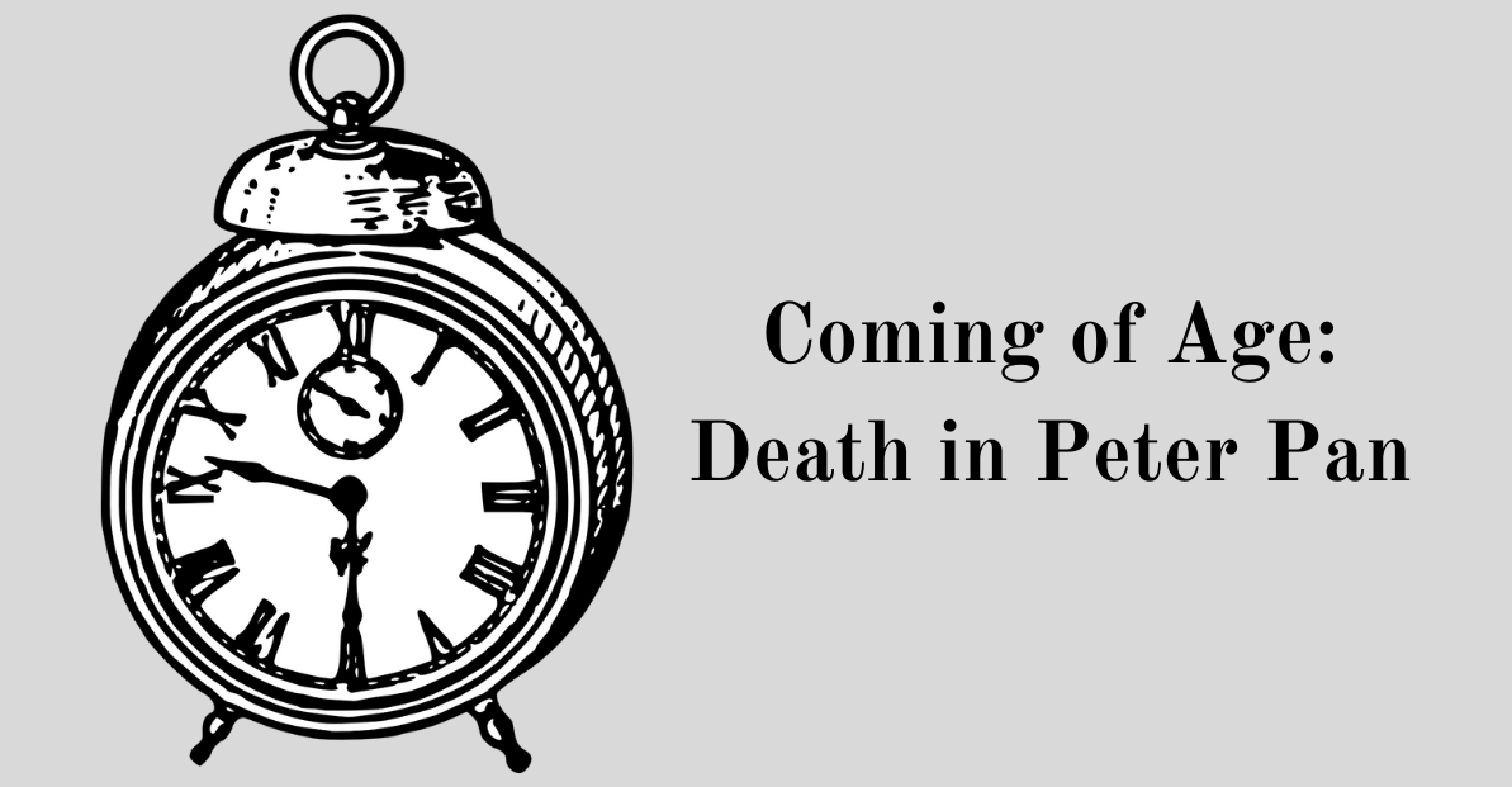Because everyone loves a good story
Coming of Age: Death in Peter Pan

A broken bird. An old dog. A beloved grandparent. A child’s first experience with death may not affect them in the same way it would an adult, but it will certainly draw them from innocence toward reality.
In coming-of-age stories and in life, three factors play a major role: first love, death, and family. We looked at first love last time as Peter Pan remained oblivious to Wendy’s crush and as Jody Baxter felt both disgust and possessiveness toward Eulalie Boyles. First love can be complicated, but at least it’s usually lighthearted.
But today’s topic is a harsh reality—probably the harshest in the human experience. When children first encounter death, it leaves an indelible mark on their hearts. It makes them start to wonder about things they’d never thought of before. Why did they die? Where did they go? Who else is going to die? Peter Pan and The Yearling deal with death in different ways, so let’s see how the experiences drew the characters toward maturity. Today we’ll take time to look at Peter Pan, and we’ll delve into The Yearling next time.
Peter’s Discomfort with Death

You know Peter Pan as the boy who won’t grow up. He flat-out refuses to accept aging and change, and this includes a refusal to accept death—well, certain kinds of death. Many little boys are obsessed with war and fighting, and Peter is no exception. He fights pirates and Indians and anyone else who gets in his way. The book makes it clear that he kills his enemies all the time. Bloody slaughter in battle doesn’t seem to bother Peter in the least.
But the death of people he cares about is too hard to process. Instead, he has to deny and avoid. When Tootles shoots Wendy out of the sky, Peter sees her lying on the ground and thinks she’s dead. Like any child, he doesn’t know how to react.
“‘She is dead,’ he said uncomfortably. ‘Perhaps she is frightened at being dead.’ He thought of hopping off in a comic sort of way till he was out of sight of her, and then never going near the spot any more.”
Thankfully Wendy is not dead, so Peter is spared the decision of what to do. That kind of death is never supposed to enter Neverland.
Relational Deaths in Peter Pan
As hard as it is for children to process physical deaths, relational deaths take their toll on naiveté too. In Peter Pan, J.M. Barry says that all children are “gay and innocent and heartless.” This includes Peter and his firm belief that Hook will choose to be as noble and fair in a fight as Peter is.
Once when Hook and Peter are fighting, Hook falls down, giving Peter an advantage. Instead of seizing the chance to kill Hook, Peter reaches down to give him a hand up; Peter wants to win the fight fairly. His natural “good form” has always nettled Hook, and rather than taking Peter’s hand, the foul captain bites it instead. This shocking mistreatment and disregard for all things fair is a startling revelation to Peter.
“[As Peter reached down,] Hook bit him. Not the pain of this but its unfairness was what dazed Peter. It made him quite helpless. He could only stare, horrified. Every child is affected thus the first time he is treated unfairly…. After you have been unfair to him he will love you again, but he will never afterwards be quite the same boy. No one ever gets over the first unfairness; no one except Peter.”
But the greatest relational death in Peter Pan is when Wendy and the boys grow up. Even as an adult, Wendy doesn’t forget about Neverland, but Peter forgets about Wendy. Instead of bringing her back to visit Neverland each spring as he had promised, Peter fails to come for her until she’s grown and has a little girl of her own. Wendy is too mature to cry about it anymore, although she had been heartbroken when she was younger. Peter is upset that Wendy betrayed him by growing up, but soon he settles on bringing Wendy’s daughter to visit instead. So the cycle continues.
Physical Deaths in Peter Pan

Apart from the carnage of war, there are only a few deaths mentioned in Peter Pan. The one that causes the smallest stir is the eventual death of Mrs. Darling. Her mysterious beauty and selfless love had been such a focal point at the beginning of the book, but when her children are grown and Mrs. Darling passes away, she is immediately “dead and forgotten.” It’s just another proof of their continued heartlessness. Maybe this is because they’re already mature; the death doesn’t pose a loss of innocence.
The death of Captain James Hook, far from bringing Peter to grips with reality, actually cements his refusal to mature. Hook is a constant reminder of age, and Peter doesn’t want to face those facts. The whole construct of Neverland is an eternal, ageless, changeless realm. So when the ticking crocodile – time itself – finally devours old Hook, Peter rejoices. In his heart, Peter knows that aging brings maturity, and he won’t tolerate such a thing in Neverland. After Hook’s death, the ticking croc slips away, and Peter can put the passing of time out of his mind again.
Deliberately Softened
The way that Peter Pan deals with death is considerably softened from our reality. It’s a children’s book and therefore has compassion on its young readers. The absence the deep wounds that death brings is itself part of the theme. The same can’t be said of The Yearling, as we’ll see next week. Be sure to check it out!

Add a comment, and join the conversation!